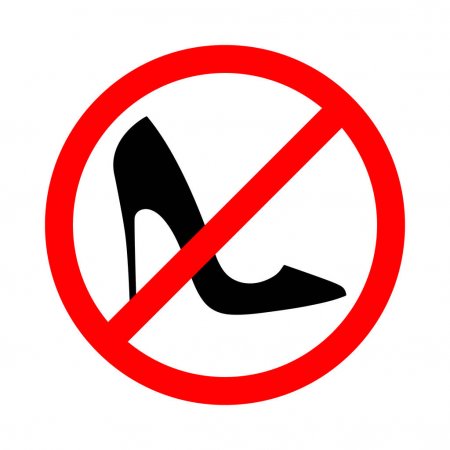Most women are fond of wearing high heels and even the constant discomfort it brings is not able to stop them. High heels make our legs look longer and slimmer and many of us choose the appearance over comfort. Almost all celebrities walk the red carpet in elegant cocktail dresses accompanied by stilettos. Many women strive to copy their looks for their daily appearances and completely forget about their leg health. But the reality is that most celebrities don’t wear high heels every day and when they go out, they choose shoes that maximize the comfort. In this article, we will tell you about three leg conditions that prevent you from wearing high heels.
1. Bunions
Bunion is a bony bump that usually appears on the inner side of the foot near the big toe. This condition means that the big toe joint is shifted out of alignment. Bunions can be asymptomatic and only a cosmetic problem. The most common symptoms of bunions include:
- Pain in the big toe joint area
- Swelling
- Redness on the bump
- Calluses or corns (from rubbing against the shoe)
- Foot widening (making shoes difficult to wear)
Despite the fact that bunions are mostly a hereditary condition, a lot of factors can aggravate the situation and high heels are one of them. If you suffer from bunions, you need to choose comfortable shoes from soft materials with a wide toe box.
There are a lot of different treatments for bunions that include orthotics and pads but none of them can completely eliminate the bunion. The only effective treatment option that can eliminate the bunion is bunion surgery. But even this procedure can’t guarantee that the bunion will not develop again over the years. That’s why it is very important to choose the right shoes and to monitor the condition of your feet if you are prone to bunions or your closest relatives have them.
2. Varicose veins
Varicose veins is a condition that is caused by reduced blood flow. Lifestyle, habits, and heredity are the most significant factors that influence the development of the disease. As with bunions, varicose veins can be without symptoms and some people consider them a cosmetic issue. The most common symptoms of varicose veins are:
- Pain
- Heaviness in the legs
- Swelling in the feet and lower legs
- Tiredness at the end of the day
In severe cases, varicose veins are very vulnerable and can get easily infected and inflamed. Moreover, they can contribute to the development of blood clots that can be life-threatening. That’s why it is better to monitor the condition of your varicose veins and prevent their aggravation. People with this condition should avoid high heels, prolonged standing, and tight clothes that restrict the blood flow.
3. Arthritis
Arthritis is the condition that can affect not only the legs but the whole body as well. This disease leads to inflammation in the joints that results in stiffness and painful sensations. Despite the fact that arthritis tends to worsen with age, it can affect everyone from children to the elderly. The most common symptoms of arthritis are:
- Pain
- Immobility
- Swelling
- Redness
- Reduced range of motion
Women are more prone to developing arthritis than men. The other risk factors include obesity, heredity, and joint injuries. Despite the fact that arthritis can’t be completely cured, there are numerous methods that can help ease the symptoms. You should avoid high heels, body positions that strain your joints, and additional pressure on the afflicted area. Physical therapy and pain medication can help reduce painful sensations and increase the range of motion in the affected joints.
















